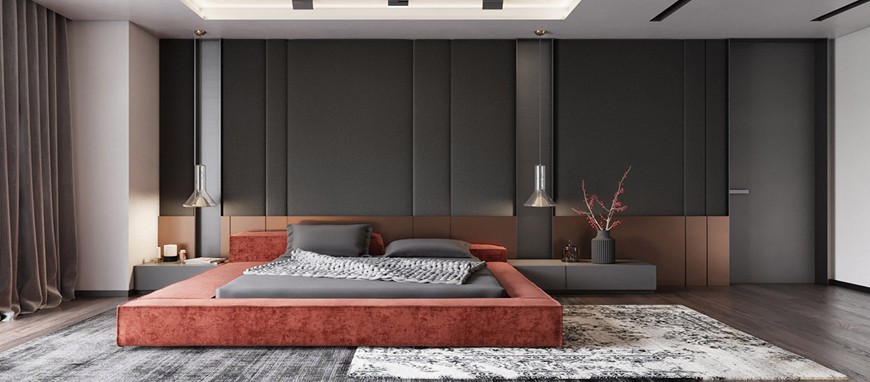How to arrange bedroom furniture in simple steps

Arranging furniture is an art: It’s one of the most important parts of interior design.That’s not to say that you have to be a pro to do it well. With just a little thought and willingness to xperiment, you can do quite well on your own, and have some fun along the way.
One of the most difficult rooms to design is the bedroom, especially if it’s small. Fortunately, we have some simple tips and tricks on how to arrange bedroom furniture
1. Use only necessary furniture
There are a lot of things you could have in the bedroom, but you should start with just what you need to have. Trying to work with a lot of different items can easily become a mess, and you might not need all of them in the end.
This is especially important in small apartments when there isn’t a lot of extra space — using fewer pieces will make the room look and feel a lot more spacious. If your room is extra tiny, use taller dressers and shelves to get more storage while taking up less room.
2. Think about function
The best way to only have what you need in the bedroom is thinking about what you’re going to do. If you have a good idea of what you’re going to want and need to do in the bedroom, you can design around that.
If you watch a lot of TV in bed, find a layout that works well for that. Plan a walkway from one place to another — you don’t want to find the path between the dresser and the mirror blocked when you’re trying to make sure your clothes look right.
3. Draw it out
It’s easier to sketch out different furniture arrangements than to move furniture around the room. It’ll save you a lot of errors of thinking something will fit when it won’t or scratching your floor or walls while moving your dresser for the zillionth time (believe us, it happens).
Measure at least your biggest items (bed, dresser, shelves, etc.), as well as the dimensions of your room, then sketch out a couple of different options. If you’re not much of an artist, check out an AR app that can do the job for you. Try Home Design 3D (iOS) or Floor Plan Creator (Android).
4. Start with the bed
At some point, you have to move things around the actual room and not around your drawing. Since the bed is the most important part of the bedroom (it’s right there in the name), get it in place first. Generally, you’ll want to put it against the wall opposite the door or the largest wall with no windows, but your choice may vary.
In a small bedroom, that may not work. Find a spot for your bed that makes the most sense to you, just make sure you can open and close your bedroom and closet doors. Also, while placing your bed under windows is totally OK from a design perspective, you may find yourself feeling uncomfortable drafts over the winter.
5. Go big to small
Once you’ve found the best place for your bed, arrange everything else starting with the biggest bedroom furniture item followed by smaller ones. Usually, the dresser comes next, followed by bedside tables, a desk, shelves, chairs and anything else you may have. Generally, the tables will go next to the bed, the dresser on the opposite wall and a desk in the corner, but these can all vary.
Small-bedroom tip: If your closet is spacious, see if you can fit your dresser inside it. This will open up a lot of extra space in the room itself.
6. Place your area rug properly
Though it’s not a furniture item the area rug is still a key component of how to arrange bedroom furniture. Keep in mind, your area rug placement will depend on your room’s finalized layout.
Area rugs are typically placed underneath the lower two-thirds of the bed so they create a cushy area to step on as you get out of bed in the morning. If your bed is tucked into a corner, your rug will likely have to be placed somewhere else, like next to the bed or in the center of the open part of your room. Wherever it goes, hopefully, that rug really … sorry, we can’t make a “The Big Lebowski” reference. You know it already.
7. Arrange the furniture you have first
Don’t buy new furniture until you’ve arranged the pieces you already have. This should be an obvious point, but it’s really easy to buy things you think you need before you actually need them.
When you wait until arranging what you already have, you’ll know exactly what you need and where you want to put it. You’ll also be able to make sure anything you get is the right dimensions and style to fit in the room, both literally and stylistically.





